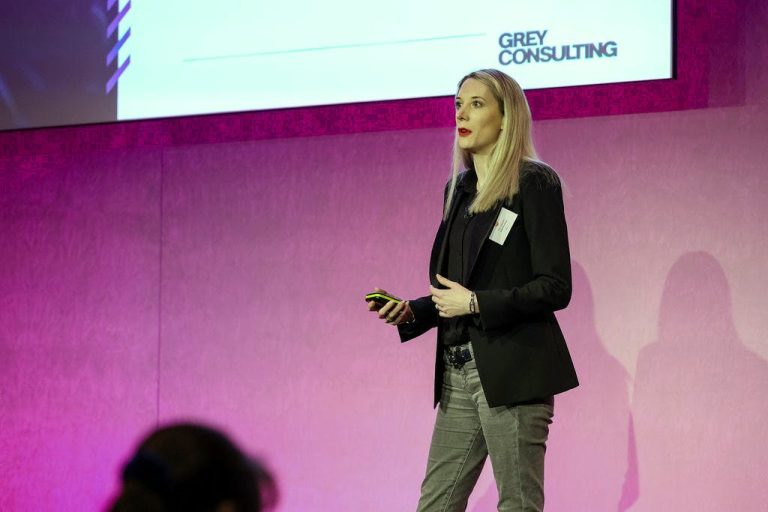The mobile marketing industry is in flux right now. Changes to IDFA and other looming updates have fundamentally altered how brands and agencies are measuring their campaigns. In response, brands will have to compensate for the signal loss gap on mobile devices by diversifying channels and adopting new strategies.
“OTT can’t be measured to the same degree as other channels, but it’s still really interesting,” Emery says. “Same thing with influencers. You may not be able to tie things back without specific pieces of code, but it’s still going to move the needle.
“With that,” Bowen adds, “it’s going to be a good year for data scientists. There will be a great need for those in-house so that they can solve those problems. And while Bowen agrees that trying new channels can lead to surprising results, it’s important to prepare in advance how you’re going to measure them. “You’re going to have smaller channels with potentially less accurate measurements. You just want to make sure you have that in order before starting these new initiatives.
IDFA’s impact on client measurements?
Emery recommends that brands try multiple things to see what sticks. “We’ve mentioned a lot about diversifying ad spend, where people are spending on different channels they can measure. Maybe they’re spending on branding, re-engagement, or new channels.
The biggest problem right now, according to Bowen, is that there are now two completely different data sets. One is MMP attribution for users who opt-in to ATT notifications and other platforms like Android, and attribution from SKAdNetwork. This makes it very difficult to unify the data and get a true picture of the effects of your marketing spend. Nobody has yet found a solution for it, and it will likely be a long time in coming.
There’s also a difference in the way they’re rolling this out. “Google seems to be taking a more consultative approach. They release a proposal, get feedback, and either ditch it or edit it, and then repeat over time. Google is much more willing to get feedback from the market on the solution rather than just do things in a vacuum, and then make a surprise announcement that people are being moved to a new measurement solution.”
Probabilistic modeling–here to stay?
“It’s kind of night and day between Apple and Google.”
Despite objections to SKAdNetwork, however, Konigsberg states that people will eventually have to adopt it because that’s what giants like Facebook will be leveraging.
Android’s Privacy Sandbox
On the topic of fingerprinting, Konigsberg predicts that Apple will put a stop to it because it’s against the user’s interests.
To help audiences understand more about this topic, we hosted a panel discussion between Paul Bowen, GM of AlgoLift, and Ron Konigsberg, Chief Growth Officer for the marketing analytics and attribution experts at Singular. This panel was chaired by Liz Emery, Tinuiti’s VP of Mobile and Ad Tech.
Bowen echoes Emery’s statement. “Owning your data is very important. Retargeting and re-engagement are going to be much more different if you don’t.” Bowen also predicts that ATT will start to be enforced by the end of the year, and that advertisers will begin to take measurement of their investments much more seriously.
Recommendations for a privacy-focused world
Konigsberg’s prediction is that SKAd will become a commodity, and every company will have to implement it properly. It’s not a recommendation–it’s a requirement. “That’s the motto of the year.”
We’ve shared some of the webinar highlights below.
“We always felt it was a short-term solution,” answers Konigsberg. ”The reason it’s still in use is because people aren’t satisfied with SKAd. Not the performance, nor the regularity.” Bowen begins by stating that Android is part of Google’s core business, which isn’t the case for Apple. This colors their approach to privacy. “I think we can expect Google to be much more considerate about the overall advertising ecosystem than Apple may be.”
Apple’s not the only company that is shifting towards more privacy protection from its users. Google has started its own initiative called the Privacy Sandbox. We asked our guests for their thoughts.
Bowen says, “I think we’re going to see increased investment across the board in unifying user data and understanding marketing spend returns.”
Predictions around user acquisitions
When talking about trends in ad spending, Bowen observed that spend has moved towards where measurement is easier: Android and networks with probabilistic attribution. This won’t last long, however. The costs for those networks have gone up, and advertisers are starting to realize that there’s no escaping SKAdNetwork and will eventually return.
“IDFA completely disrupted measurement and targeting on iOS,” Bowen says. “We now have a situation where the attribution we relied upon from MMPs is no longer the only source of truth. We have another source of truth: Apple’s SKAdNetwork.”
Watch “The Future of the Web is Mobile” in full for more insights on mobile advertising, including their observations on Web3 and the Metaverse.
Konigsberg, however, is not as bullish about the technical enforcement of ATT. He considers privacy to be enforced more stringently. This is because the enforcement will come from more directions. “It can be boards that want their companies to be more compliant; it can be enforced via policy instead of technically, and it will only get tighter as things go further.”
And then there’s the topic of first-party data. “I always advocate stronger use of first-party data, ”Emery adds. “That’s something I always recommend to our clients here at Tinuiti, whether that’s in retargeting, re-engagement, or targeting in general on channels you’ve run historically.”






